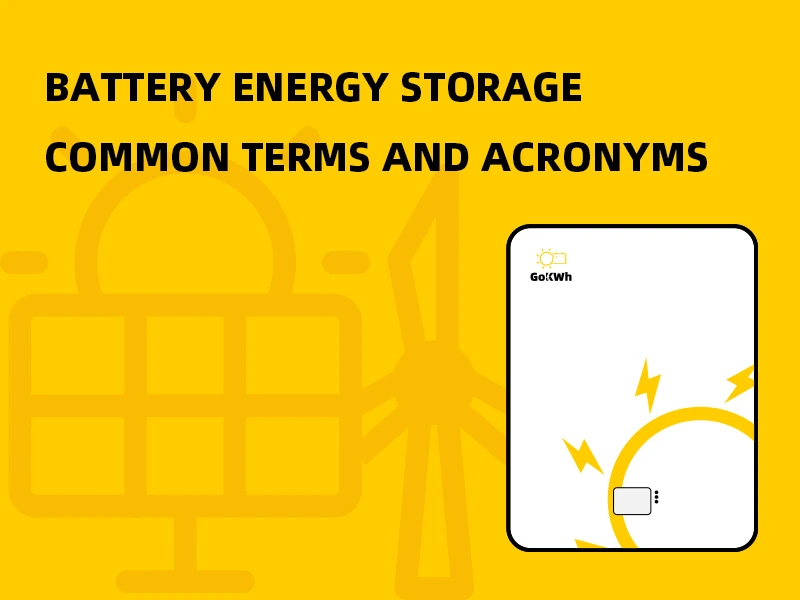e-mail us: hi@gokwh.com

Battery Energy Storage Common Terms and Acronyms
When novices are exposed to news, popular science and materials about solar energy and battery energy storage, they will always fail to understand some unfamiliar nouns or abbreviations. GoKWh summarizes some terms commonly used in the industry for you. Let’s check out!
Common terms and abbreviations
ESS (Energy Storage Systems) – This power system includes a battery and a power processing unit like an inverter.
AC-Coupled ESS – A battery system that connects directly to the AC main panel (e.g. Tesla Powerwall), independent of the solar energy system.
DC-Coupled ESS – A battery system that is connected through the Hybrid Inverter, and the PV panels are also connected to the same inverter.
Inverter – Convert DC energy from the solar panel to AC electricity that can be used to power your household appliances.
Single phase – AC uses two lines to distribute power. Because the single-phase electric voltage reaches the peak twice in a cycle, the instantaneous power is not constant.
Three phase – It is three groups of alternating current (power supply) with equal amplitude, equal frequency and different initial phases, which is generated by a three-phase generator with three windings. It is a common power supply in the industry.
BMS(Battery Management System) – It is a system to manage the battery. It usually has the function of measuring the battery voltage to prevent or avoid abnormal conditions such as battery over-discharge, overcharge and overtemperature.
LFP (LiFePO4) Battery -It is a lithium-ion battery that uses lithium iron phosphate (LiFePO4) as the positive electrode material and carbon as the negative electrode material. It has the characteristics of high safety, long life, high temperature resistance and low cost.
PV system (Photovoltaic system) – An electric power system designed to supply usable solar power by means of photovoltaics. It consists of an arrangement of several components, including solar panels, a solar, as well as mounting, cabling, and other electrical accessories to set up a working system. It may also use a solar tracking system to improve the system’s overall performance and include an integrated battery.
SPI ( System performance index) – It refers to the evaluation of the energy efficiency of the energy storage battery system based on the energy exchange with the power grid. Its standard is to reduce the power grid consumption of residential buildings and minimize the negative impact on the grid connection of the photovoltaic system. It is the key index to evaluate the energy efficiency of the photovoltaic energy storage system.
Electrical terms and abbreviations
Rated power – Refers to the amount of power flowing into or out of a battery at any instant.
DoD (Depth of discharge) – The depth of discharge for a battery is the extent to which a battery can be discharged safely while ensuring enough energy is left to power the battery’s own electric requirements. Overall, DoD is another metric for the amount of energy stored in a battery that is available to you. A standard DoD is between 80% to 95%.
Round-trip efficiency – The percentage of stored electrical energy that is later recovered or usable. The more efficient the round trip, the less energy is lost during storage.
Cycle life – It refers to the number of cycles and time limit for the battery to be charged and discharged normally before losing its normal working performance.
MPPT (Maximum power point tracking) – It is a converter that converts the higher DC voltage in the PV board into low-voltage electricity to charge the battery. Optimizes connectivity between PV panels and battery packs or utility grids.
IP (Ingress Protection) – It means that the electrical appliances are classified according to their dust-proof and moisture-proof characteristics. The protection level consists of two numbers. The larger the number, the higher the protection level.
Critical Load – Household loads are supported by the battery / ESS system when the power from the grid becomes unavailable.
